[This is the latest in a series of posts on Cloth that has now built into something very substantial: browse the others on the dedicated page here]
The use of synthetic fibres in cloth for tailoring is generally frowned upon by consumers, and with good reason.
Most of the time, synthetic fibres are included to save money – to try and replicate some of the aspects of good natural materials at a lower cost.
However, as with most things, it’s not always so simple.
There are different types of synthetics, sometimes used for very practical benefits, and they don’t necessarily make cloth cheaper. I’ll lay some of those out in this piece.
Overall, though, it’s still worth retaining that scepticism. Natural fibres have their own performance properties, and usually just require a little more care. If you can’t be bothered to give them that, then frankly there’s no point spending good money on clothing in the first place.
First, the types of fibre. There is huge variation here, but essentially these split into two big categories, usually called artificial and synthetic.
Artificial fibres originate in natural materials (either plant or animal, cellulosic or protein) and are then repurposed, usually with chemical treatments. Examples are Rayon, viscose (above), Cupro, acetate and triacetate.
Synthetic fibres do not use natural materials, but are made from synthesised polymers of small molecules (usually from petroleum).
The most common here are polyester, polyamide (Nylon, below), Lycra, Modal and Teflon. Some of these are brand names, some not, as indicated by the capitalisation.
Synthetics are easier to manipulate than artificial ones, and are therefore more commonly used in sports or active clothing, where you might need a specific combination of breathability, water resistance and stretch, for example.
The fibre itself is also often made with properties such as being stainproof or stretchy, whereas natural and artificial fibres achieve this through the weave or (more commonly) a finish on top. It’s usually not in the yarn.
Synthetics are also generally tougher than natural or artificial fibres, but suffer in being more sensitive to heat and not very comfortable or allergy-friendly.
Which is why people are more likely to wear a cotton T-shirt (the most comfortable against the skin), wool knitwear (warm and temperature-regulating) and synthetic outerwear (lightest, toughest, most water-resistant).
Artificial fibres like viscose have some of the benefits of natural ones, such as being biodegradable, but are also more energy-intensive to produce than natural fibres.
So they are certainly better in some ways than synthetics, but also have their disadvantages.
It’s at this point that it’s worth highlighting the natural performance aspects of natural fibres like wool.
Wool is hypoallergenic, flame-resistant and odour-resistant. But its most important feature is probably that it can absorb so much water (more than 30% of its weight) before it feels damp or cold.
This applies to moisture coming from the outside (rain) and inside (sweat). So it rarely feels cold and is a natural thermoregulator.
There are then natural performance elements that come through how wool is spun or woven. A plain weave is more breathable than a satin weave; high-twist yarn increases elasticity and wrinkle recovery; a milled or brushed finish traps air and retains heat.
If you want something to be tougher, just use a coarser yarn. Tweed is very resistant to abrasion or tearing; its hairy surface creates water-resistance; and it has all the other advantages of wool above.
Plus it feels nicer. I put on a synthetic rain jacket for the first time in months the other day (to go camping). It has minimal stretch, it doesn’t move with the body, and it’s really loud. It crinkles constantly, like wearing a bin bag.
In that situation, I needed it for a very specific purpose: staying in the rain for a long time – as I put up a tent, for example – and drying very quickly afterwards. Tweed would stay damp for too long.
But at home I would always wear a wool or cotton coat in the rain, perhaps in a Ventile weave or with a light wax or other coating, because it’s so much nicer to wear.
There are treatments for natural materials, of course, as we covered in more detail in the equivalent of this post for shirt fabrics.
These can make wool or cotton more resistant to water, stains or bacteria, by soaking it in a chemical bath.
But those treatments eventually wash out (more an issue with shirts than suits) and usually reduce the nice ‘hand’, the feel, of the material.
The only one that works very well is ‘real’ natural stretch: where fabric is woven larger than required, then washed in soap and water to shrink it down.
I know many people dislike synthetic fibres because they don’t have the heritage or craft of natural ones.
Synthetics are made in a lab, where natural fibres come from animals bred in the field, then shorn and woven in traditional mills – and sold by companies that might have been doing the same thing for centuries.
Personally, I’m not as emotional about it. But it is true that most synthetics only aim to increase performance, whereas natural ones tend to aim for feel and for beauty.
A cashmere overcoat is made to be a beautiful object: lustrous to look at and luxurious to wear.
If it’s raining, don’t complain that the coat isn’t waterproof. Just carry an umbrella.
As a final word, I’d say that as a general rule you should only use cloth with synthetic fibres when you want it for a particular purpose.
So some lightweight, open-weave slubby linens have synthetics added, to give the cloth body and sharpness. You sacrifice a little of the feel, but you know what for.
Be sceptical of a navy overcoat that has 20% polyester in it, when it would be perfectly practical in 100% wool. You’re not gaining much, and chances are that one reason for including the synthetic was to reduce the price.
Thanks, as ever, to Luca Driusso and others for their help with this article.


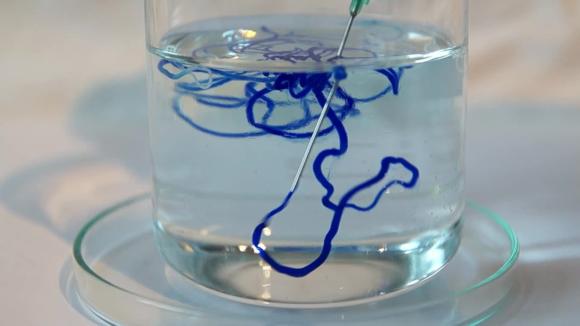
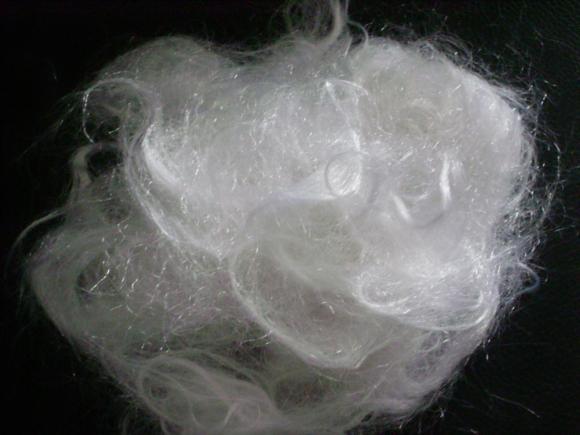
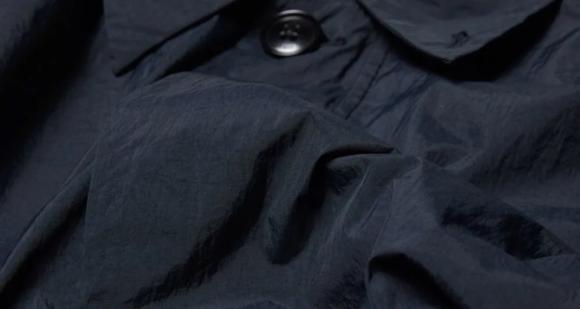
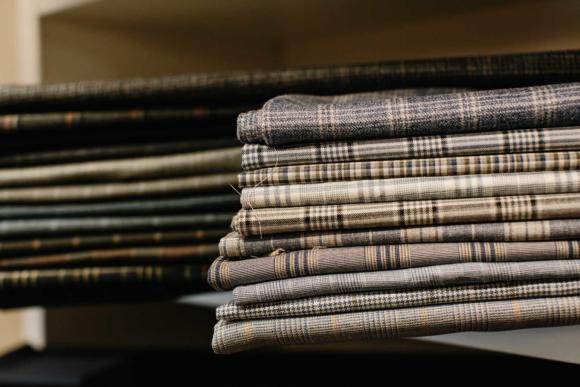
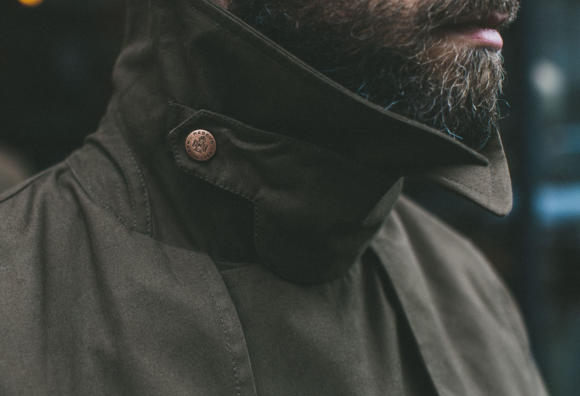
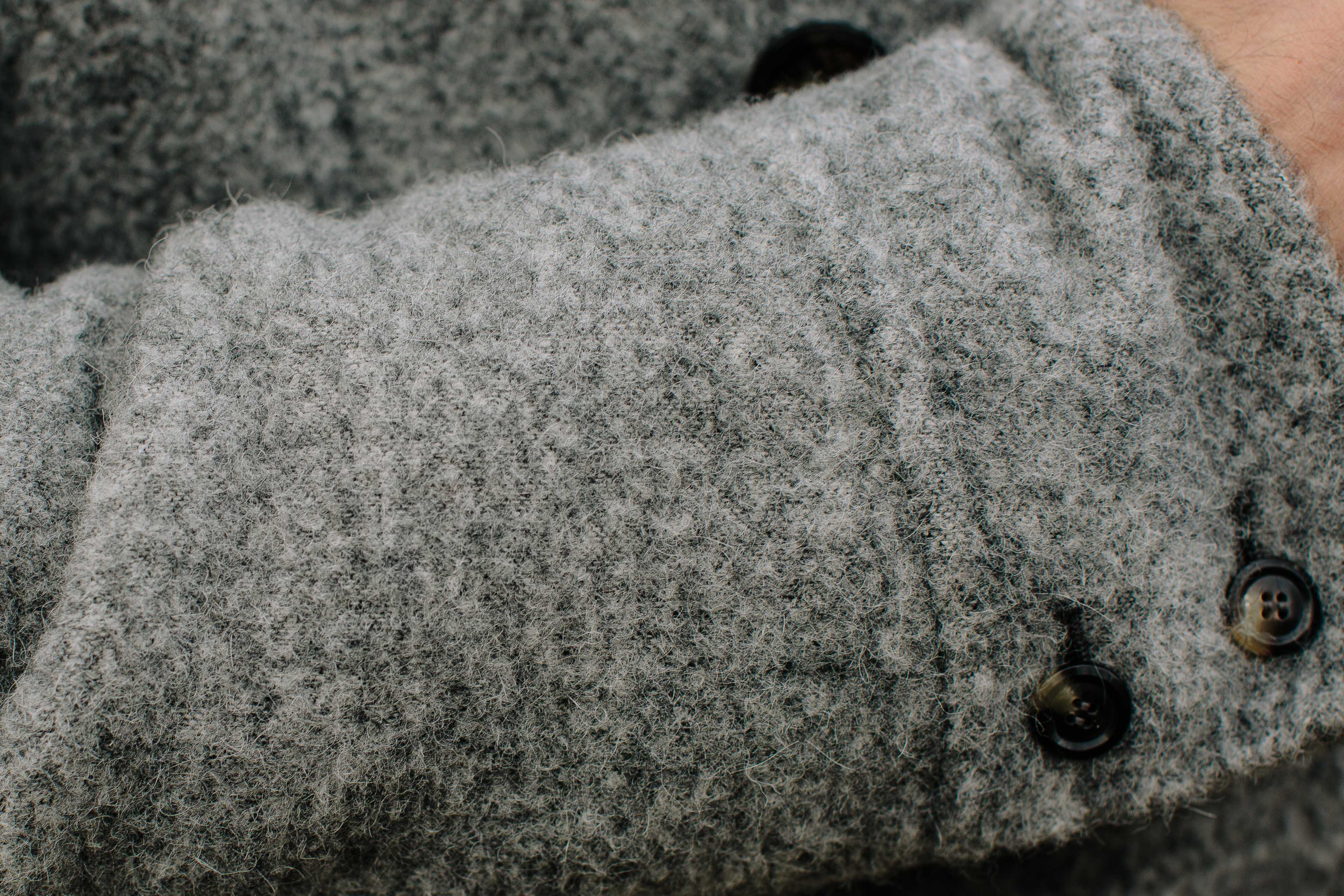
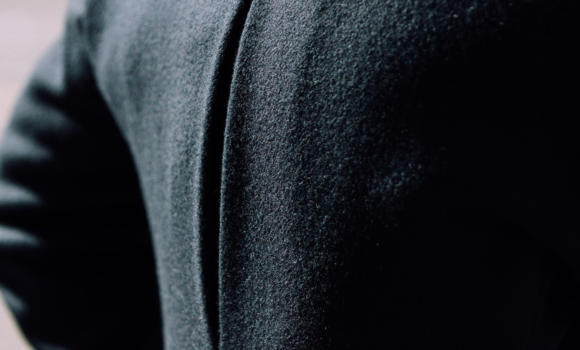
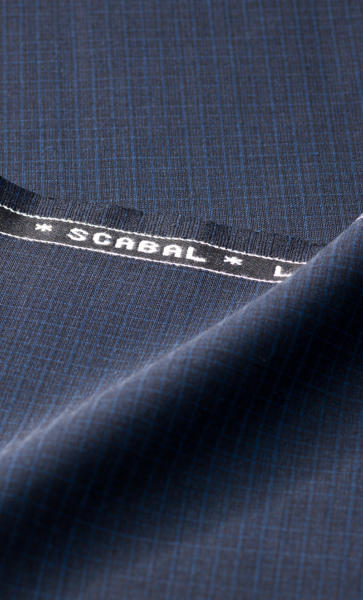
Very interesting post Simon.
How do you feel about the small amount of synthetic yarn added to cotton chinos and jeans today to give some stretch?
So it’s functional, which is good, but it’s really not needed in denim. In chinos yes, perhaps, but only if you’ve tried ones without and find you really need the stretch
I liked the Blamo episode with Abasi Rosborough, where they called wool the original performance material, perfected over hundreds of thousands of years of evolution (I’m paraphrasing). Hard to compete with that.
They add 20% polyester to cut on cost !
Is this what happens when accountants / business people are allowed to have their say in sartorial matters ?
I was under the impression that modal was artifical rather than synthetic: isn’t it made from beech trees?
Yes good point. Let me double check.
Yes, modal is a type of rayon, from beech trees.
Simon
What are your thoughts on a little stretch in cotton chinos? Eg Incotex chinos.
I can greatly sympathise with such a sartorial chap as yourself having to don a weather proof jacket and sounding like a crisp bag and probably in a lurid colour to boot. I do a lot of outdoors stuff and would recommend Paramo if you need less noise from your clothing; it’s also very functional which is the prime object of that type of clothing. My main point though is an observation about synthetics and their environmental impact being very often fossil fuel based and all the ramifications of production. If their inclusion in fabrics is purely as a “filler” then perhaps they should be avoided if you can afford a natural alternative such as wool. I applaud your reference to such cloths as Ventile and Grenfell – excellent but very heavy and difficult to dry out but great for raincoats. Some concern is being expressed about cotton production with pollution and water usage but nothing compared to oil based synthetics. This whole debate about the impact on communities and the environment of clothing production is a very worthy one and thank you for raising it, Simon.
Viscose: you make it sound like an eco friendly product. My understanding is that 1/3 of its production leads to deforestation and that the chemicals used, very toxic, are often spilled in rivers, untreated. On the opposite, the chemicals used to produce Cupro are kept in closed circuit and 100% recycled. As cupro looks more luxurious a lining and is not much more expensive, why not encourage readers to choose it?
My impression is it’s not that simple Gonzague. Some of the artificial ones use no chemicals but are very water intensive to produce. It’s not an area I know enough about to talk about in depth though
You mention, correctly, the fact that synthetics don’t really bio-degrade (as Prince Charles so ably demonstrated). (https://www.telegraph.co.uk/royal-family/0/hrh-the-prince-of-wales-why-we-should-buy-wool-this-winter/amp/)
It’s worth noting that 15% of world oil output is for non fuel uses – a high amount is used in clothing:
‘Petrochemicals are expected to account for more than a third of global oil demand growth by 2030 and nearly half of demand growth by 2050’ (see Reuters). Regrettably synthetics are now used across all tiers in fashion whilst percentages seem to be proportionally increasing year on year. For example M&S – Britain’s largest clothing retailer (to 2018) now produces many fully synthetic suits (83 listed online) – something not done a decade ago. Much of this output will not degrade once discarded, so the cheap fast fashion blighting the planet today will continue to build for many generations to come. Regrettably this does not seem to be changing in any marketplace anywhere soon. (https://www.reuters.com/article/us-petrochemicals-iea/rising-use-of-plastics-to-drive-oil-demand-to-2050-iea-idUSKCN1ME2QD)
Dear Simon,
You on the high road and I on the low have gone different ways to arrive at the same judgments about natural cloths, which makes me happy. But I’m worried about nano coating of covert coats etc. – Extra: My 100% cotton or wool socks (for exanple Corgi) inevitably developed holes at a certain spot perhaps due to my RTW shoes or boots, but added synthetic from 10 to 20% (for example Scot-Nicol) stopped this,
although with time and washing other holes appear which can be repaired for awhile.
2% synthetic stretch in trousers makes for me a noticeable pleasurable difference, and I see
certain RTL suit jacket or blazer
retailers offer stretch cloth, which
might be an advantage to dance in etc.
“Be sceptical of a navy overcoat that has 20% polyester in it, when it would be perfectly practical in 100% wool. You’re not gaining much, and chances are that one reason for including the synthetic was to reduce the price.”
I have a couple of overcoats that fits this description. I understand that the 20% polyester is there to reduce the price, but I don’t think that’s necessarily a bad thing (I’d rather pay less than more…). Putting emotional and environmental issues aside, are there any performance issues with having ha 80/20 wool/polyester blend compared to pure wool in a overcoat?
It might perform better in some ways, wearing harder for instance. But it won’t feel, hang or look as good as wool.
While there’s nothing wrong with being cheaper, you don’t want cheapness for its own sake
Very interesting, as always. However, a point was not addressed. I’ve read recently of how fibers from washing clothing are polluting our waters and oceans. Natural fibers biodegrade and therefore don’t contribute so much to this effect. But the artificial ones should be avoided. I’m not sure of the impact of synthetic fibers in this respect? Your article would be stronger, and more topical, if it addressed this matter.
Thanks, good point. I’ll try to address that in the future
I agter wirh Feurich – very interesting! Synthetic fibers will end up as microplastic in the ocean as well. I went to a research seminar on sustainability and fashion a week ago where one panelist told that she had been approached by the Norwegian government and asked how to best dispose of used garments made by synthetic fibers. She had advised that from a sustainability point of view it would be better to throw the garment away rather than donating to a charity. Then, at least, it would be burned and used for heating rather than end up as microplastic.
When I started following menswear and in particulary PS, I at first hated synthetic fibres probably like most other readers. However, a few years later with a degree in textile technology Ive started to appreciate them a alot more. I think a lot of readers forget that the textile industry is so much more than just clothing. Synthetic fibres are gods gift, the ability to give a fibre whatever property you want is simply amazing. Technical textiles such as medical textiles, geotextiles, agrotextiles, workwear (fire fighter gear, bulletproof vests) it’s essential with synthetical fibres and I think it’s important not to forget. Its easy to live in the menswear bubble and bash on the fibres but people often forgot how much they have improven our quality of life
Re. Feurich’s point: it’s something I commented on (with references) in two comments in the ‘Guide to synthetic shirting’ (I think March 2019 but as you no longer seem to date articles it’s hard to know). The Guardian article is the best recent media source to go on.
Thanks. I assume you mean this piece:
https://www.permanentstyle.com/2019/03/the-guide-to-performance-shirtings.html
And thanks for the point on dates, I didn’t realise they don’t appear on that format of article
In the Nordic countries where outdoor sports are common in the winter you are looking for fabrics that can transport sweat from the skin to outer layers. Wool is by far the best material to wear closest to your skin but the alternatives to that is always synthetics. Cotton does not transport in the same way but rather sucks it up and you’ll be cold. The odd thing I find is that any piece of clothing bought with stretch for instance using only 5% elastan commonly makes you sweat when it is hot gets you cold when it is cold moreover it does not keep the shape as well nor does collect patina through the years. I avoid synthetics as a principle also because when being washed they leave small plastic particles in our water.
Modal is an artificial fiber, cousin of Viscose and spun by Lenzing Germany.
Next time you are visting Milano Unica textile fair, happy to welcome you for a visit in our 150 year old mill open days @ TMR Cederna. We weave a lot of artificial high performance fibers.
Thanks!
Lenzing is in Austria, not Germany.
If you want to avoid crackly, loud synthetic outerwear for camping activities I can recommend Hilltrek clothing. They make in Ventile and various technical variations thereof, and also fleece. The garments are made on Deeside. They will alter the pattern for existing garments to allow for longer/ shorter sleeve and body lengths and also (for £750) make a totally bespoke garments. Worth a try.
https://hilltrek.co.uk/
Dear Simon,
thank you for this interesting article. I like that you broaden the scope of your guide-series beyond the standard wool/cotton/linen/silks.
A small quibble I have with this article is that for me it felt that the emphasis was not quite right. While reading, it felt as if half the article is about the advantages of natural materials, esp. wool or the possibilities of coating natural materials, while the actual topic of the article fell a little short. I would have been interested to read more about actual differences between the synthetic fibres and their performance (e.g. nylon vs. polyester). Maybe there is not much to say, I don’t know, but then that could also have been stated in the article.
On a different note: I liked your comparison between your rain jacket and a wool coat and the different uses. Any plans to make that into an article? To compare the water-/windproof-properties of different materials like tweed, ventile, grenfell, gore-tex, etc.? You touched on that topic in several pieces but maybe it could get one concise overview-article.
Hi Chris. Good point, I think synthetic materials are just generally not that useful in tailoring, so it’s largely a question of setting out why not.
But as regards outerwear, they’re definitely more useful and practical, so you’re right, something on those properties around outerwear (synthetic and not) might be interesting
Hi Simon.
I just recieved a nice overcoat from Drake’s and I somehow missed that the fabric isn’t 100 % wool, intstead it’s a mix of 80 % fleece wool, 7 % polyester, 5 % acrylic, 4 % alpaca and 4 % wool.
Is there any good reason to put the synthetic fibres in this coat? Afterall it is a 1800 dollar coat.
Best wishes
Hi Christian,
Putting synthetics in can have advantages, such as resistance to abrasion, a little extra water resistance, and giving strength to an otherwise loose weave. Personally I would always want natural fibres, or know why a garment has non-natural fibres in there. But I would have thought with Drakes that it would be for one of these reasons rather than saving money.
I’d suggest asking them, or if you can’t get a response or feel unsure about it, then consider changing it.
I’ve had the same experience – but with an MTM tweed suit. No fabric breakdown on the swatch. I was furious when I realized.
I should note that wasn’t at drakes.
Hi Simon,
I have a question about a coat I’ve been considering buying, specially a navy Boglioli trench in a wool/cashmere/cotton/polyester blend:
https://www.bogliolimilano.com/us_en/blue-baltico-herringbone-cotton-wool-and-cashmere-trench-oct114bsc7031080782-man-trench-coat-dark-blue
It lists 21% polyester in the composition. As it seems to be unlined I’m fairly sure that the external fabric is a wool/cashmere/cotton/polyester blend, although I have reached out for clarification.
Do you have a take on the inclusion of polyester in the fabric and whether there’s a good practical reason for it? You stated in your final sentence of this post “Be sceptical of a navy overcoat that has 20% polyester in it, when it would be perfectly practical in 100% wool”.
My initial assumption was the polyester is there to cut costs but that doesn’t really seem to make a lot of sense to me in this case. After all, it’s an expensive coat, and Boglioli makes plenty of things in 100% wool, or pure wool/cashmere blends. Looking at their pieces, they seem to use polyester in a lot of their fabrics, even having some 60/40 cashmere/poly jackets – do you see a practical benefit to the inclusion of polyester in these fabrics aside from the potential cost savings?
thanks,
Daniel
With that coat, I would think it was there for water resistance – it’s a rain coat more than an overcoat. So no, there I wouldn’t be concerned.
Hi Simon.
Have you ever commissioned a piece – smart tailoring or otherwise- for which have explicitly selected a cloth that is a synthetic blend? If so, can you share the reasons and how you have found the ‘wearing experience’?
I recall that your pink cord jacket used a H&S cloth that was cotton-elastane, but by accident and not design…
Thanks. My prejudice in selecting all-natural fabrics has been purely on the craft and heritage aspect (although for shirts it definitely feels nicer on the skin).
I don’t think I can Flynn, no. I have rayon pieces, which is a semi-synthetic I guess, but that wasn’t something I commissioned
Apologies if this has been written before: I’m pretty sure Modal is a cellulose-based “successor” to rayon, like Tencel (but not necessarily with the environmentally friendly manufacturing process).
Thanks Jack